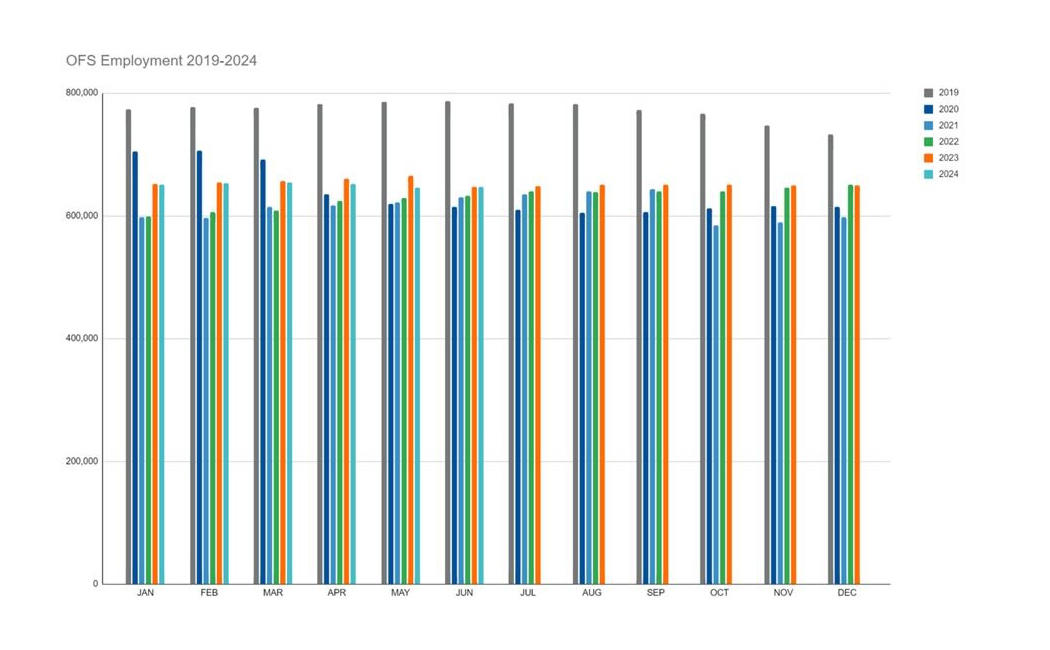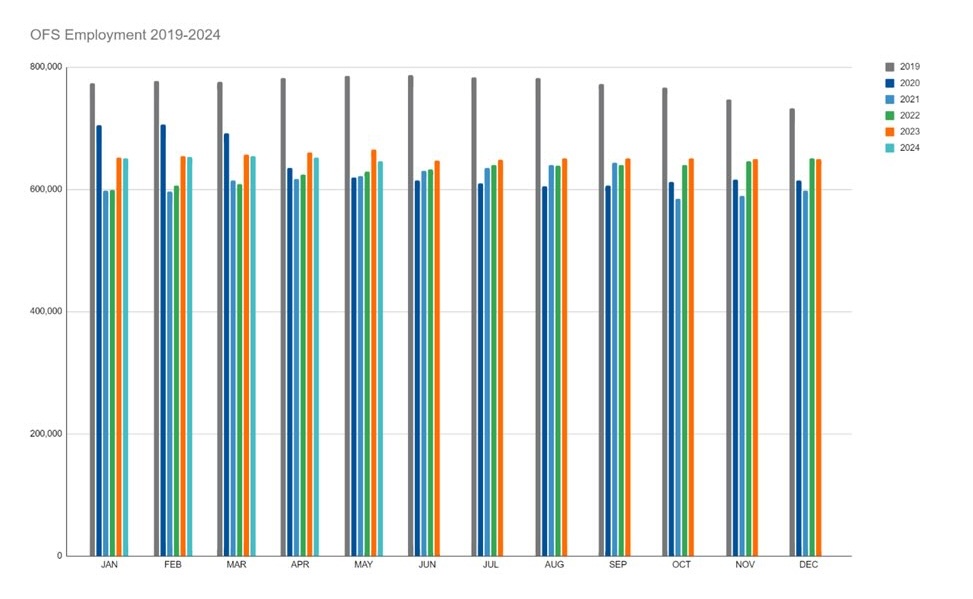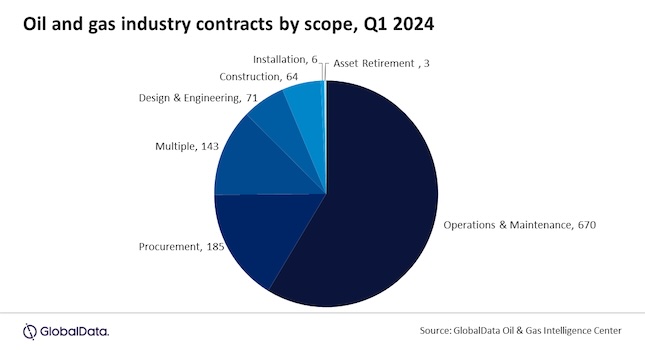Response to more challenging environments.
As oil & gas field floating vessels and offshore platforms move into increasingly deeper water and more dynamic sea states, umbilical and bend strain reliever (BSR) design has adjusted to these challenging environments. To simulate the in-service dynamic loads of these longer pieces of equipment, Oceaneering developed a large-scale flex fatigue test rig.
Installed in 2015 at its testing, qualification and reliability (TQR) laboratory in Rosyth, Scotland – located at the same site as one of its Subsea Distribution Solutions umbilical manufacturing facilities – the servo-hydraulic test rig with PC-controlled feedback loops lets operators validate the service life of their products in a matter of months, not years. The testing rig also embodies advanced product knowledge and understanding, enabling verification of product compliance with industry standards.
The full-scale test machine gives operators an accurate simulation of the dynamic umbilical’s operational conditions and the associated fatigue damage. This reduces risks by validating finite element analysis models and calculations and allows engineers to prove the functionality of complete topside assemblies.
For each test experience, confidence in the analysis and predictions models increases, allowing Oceaneering and clients to become less conservative in their design decisions, and more selective in terms of what designs they see the need to submit to full-scale testing.
Double the size of the previous test rig, this rig is comprised of a main frame with an oscillatory end and a tensile actuator opposite the oscillatory end to maintain test samples under controlled (constant or variable, as desired) axial load. It can perform tensile or combined tension and bending fatigue testing on umbilicals, bend stiffeners, latching mechanisms, flexible and composite pipes, power cables and ropes up to 26 m in length and 1,500 mm in diameter.
The testing rig also has a tensile load maximum of 1,000 kilonewtons (kN) and angular displacement up to +/ – 30 degrees in a 180-degree phase. The testing rig’s control system is for machine control and datalogging of sample instrumentation. Sensors track integrated displacement and load monitoring, thermocouples monitor temperature and strain gauges can be provided if necessary.
Same concept, larger size
In 2014, personnel at Oceaneering’s Offshore Design Centre in Chandigarh, India, collaborated with sub-contracted control systems suppliers over a six-month period to design and commission the rig frame. The conceptual scheme for the testing rig remained the same. Due to the testing rig’s size and complexity, however, a step-by-step commissioning phase was required to validate the mechanical operation, as well as hydraulic and electrical systems.
The commissioning process included:
- Laying of the 30 m by 7.5 m foundation for the test rig
- Installing the rig and a semi-permanent enclosure around the rig at the site
- Installing the control system hardware for both electrical and hydraulic systems, including pump house and bund
- Checking for the correct response to control inputs
- Fine tuning gain so that response met demand without undue delay, overshooting or loss of control
- Calibration of the test rig’s flex end and tensile load end
- Installing the first sample in the test rig, and trial loadings of tensile, flex and flex with tension.
The developers faced a challenge in establishing the final design and revision of the controls package, which acts as an interface for all the fatigue subsystems. The controls package represented the final step in the rig’s commissioning and was a vital contribution to the safe and efficient operation of the test machine.
Unfortunately, the code and controls hardware in the original controls package proved severely inadequate for safe and continued use when glitches, bugs and unknown test stops occurred during preliminary testing.
Final design of controls package
As a result, senior TQR engineers had to find and support a new controls contractor and define new operational requirements. This led to the addition of new features to the fatigue rig, including improved data-logging – fault tracing to help the user understand why the machine has stopped – and additional control modes.
The plan called for the original software to be replaced, with the new system now being able to log all the individual load cells and position transducer data, at any frequency. The new software records the peaks and troughs for trend analysis and creates a “stop” file when a limit is tripped. Engineers then analyze the sample behavior captured in the “stop” file to determine what caused the test rig to stop.
The new software addressed issues at both the tensile and flex ends of the load. At the tensile end, the load is applied to the test sample via four hydraulic cylinders, each with its own load cell. The individual load cells and cylinders must compensate for the yaw and roll caused by the flexing motion of the sample at the far end of the rig, where it is connected to the tensile end. The replacement software addressed the issue, giving a user the option to fine tune to further improve the response of the tensile end of the rig during fatigue cycling.
For the flex end, the software addressed the fact that the two hydraulic cylinders that oscillate the hub were fighting against each other. The new software, in conjunction with changes to the hydraulic system, successfully addressed this issue.
To finish the code before the test start date, staff also had to familiarize themselves with new technical disciplines such as control software coding, proportional, integral and derivative (PID) gain tuning and signal amplification to understand and correct the root causes behind operational issues.
In PID tuning, each gain can be adjusted individually to effect changes in the rig’s response to a command, typically a user request that asks the rig to go to a new load or position. In broad terms, increasing proportional gain (P) results in a quicker response, although the response will become unstable if the P value is made too high.
Increasing the integral gain results in increased stability but also will cause the response to overshoot the target value. This overshoot can be corrected by increasing the derivative gain, but this will also increase “noise” in the signal.
Signal amplification can improve the accuracy and resolution of the signal from instruments, making it easier to produce good quality test data.
Once all the required modifications had been completed, an umbilical, an oversized BSR and ancillary hardware were installed and tested beyond 10 times their predicted service life – the current industry requirement – before the required test completion deadline.
Testing conducted
Since its installation at Rosyth, the machine’s control system has been upgraded to improve its accuracy in tensile load and angular displacement across a wide range of loads and angles. The capacity upgrade was needed to test BSRs of approximately 3 m to 5 m. Some more recent applications for highly dynamic environments require BSRs of up to 9 m.
The rig has been used to test umbilicals and BSRs for the production phase of several large-scale projects, including Shell’s Prelude field development project offshore Australia, Total’s Moho Bilondo project offshore the Republic of the Congo in West Africa and Anadarko’s Constellation field development in the U.S. Gulf of Mexico.
For Prelude – which feeds natural gas to Shell’s floating liquefied natural gas facility – a longer BSR was needed to accommodate the dynamic loads and movements on the topsides and protect the umbilical components from fatigue damage. Thus, Oceaneering conducted testing of approximately 400K cycles, with angle of swing of up to +/- 25 degrees and associated tensions of up to 250 kN.
For Moho Bis – which covers an area of 320 km and four reservoirs in 750 mm to 1.2 km of water – testing of around 1.5 million cycles, with angle of swing of +/- 1 degrees, and associated tensions of up to 750 kN on the longer BSR was needed at the field.
For the Constellation development – a tieback to the Constitution spar that started production in January – Oceaneering conducted tests of around 330K cycles with angle of swing of up to +/- 6 degrees and associated mean tension of 350 kN.
At the end of 2019, the rig is scheduled to run tests on a sample containing umbilicals and a BSR for Equinor’s Johan Castberg development offshore Norway.
While no upgrades of the test rig’s capabilities are planned right now, changes to improve reliability and reduce maintenance are considered on an ongoing basis.



